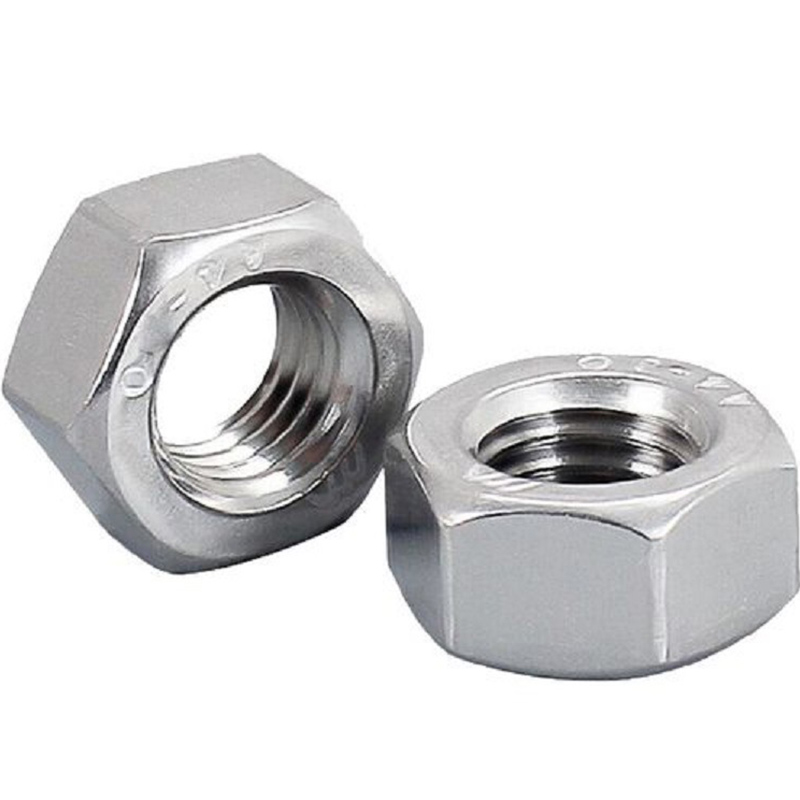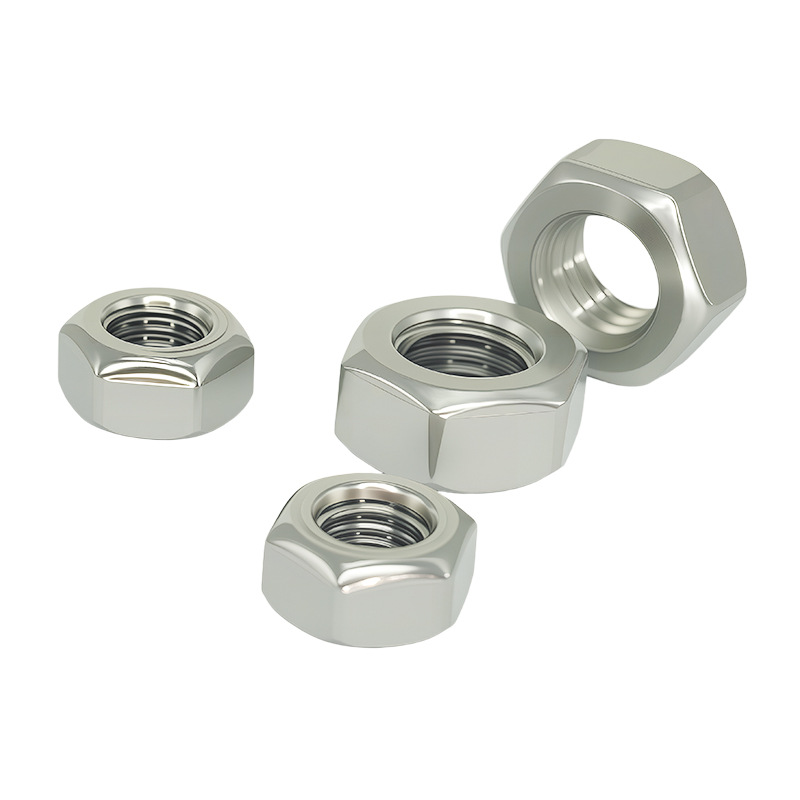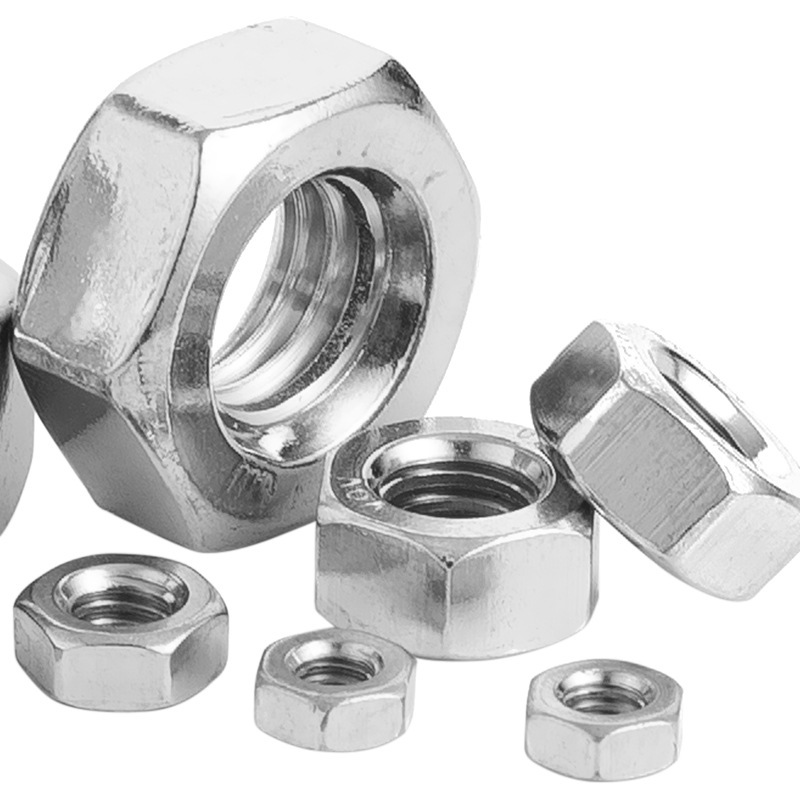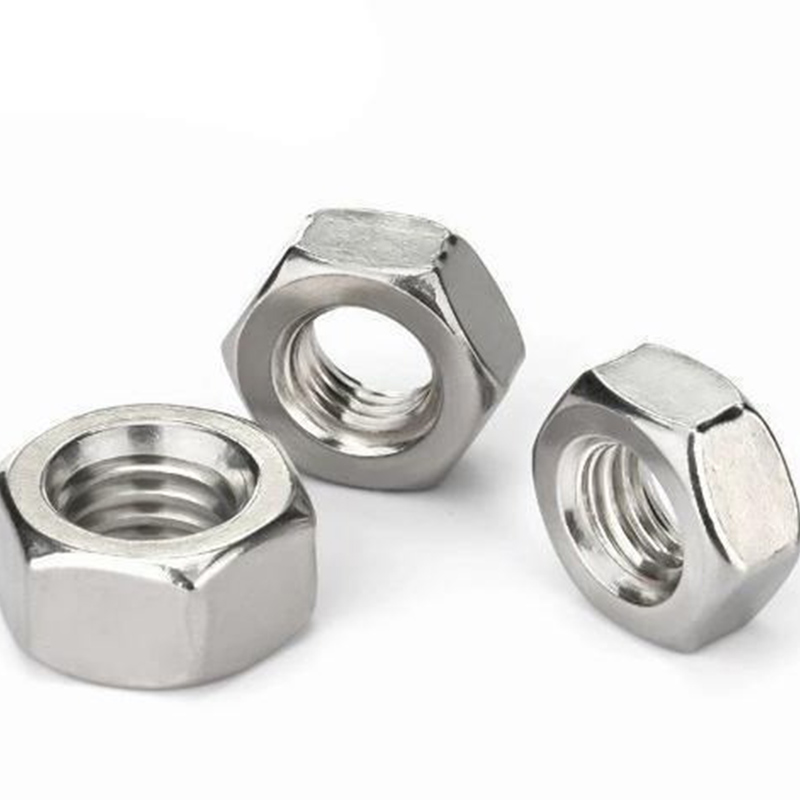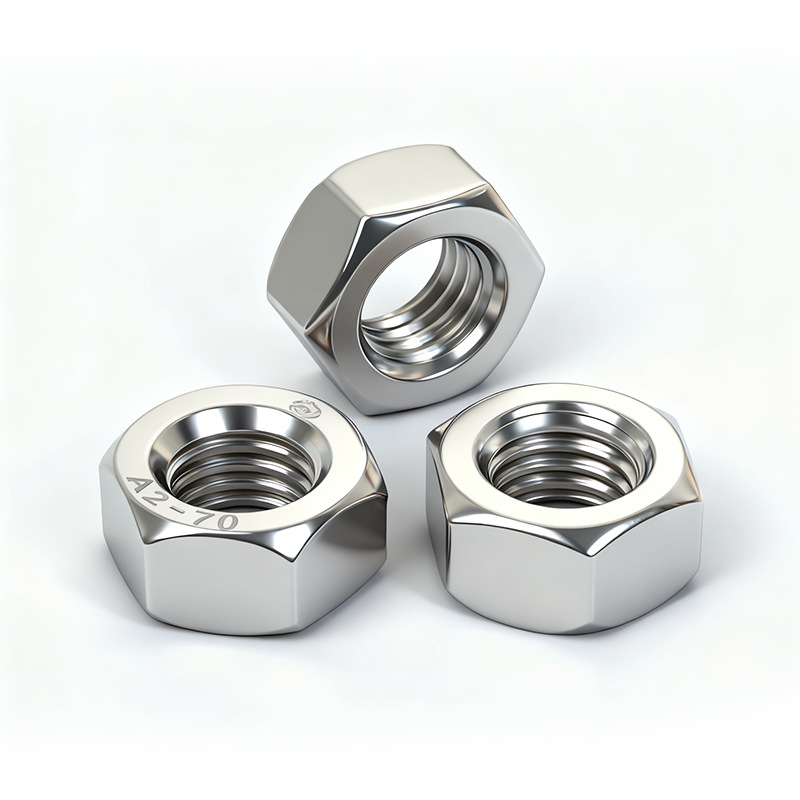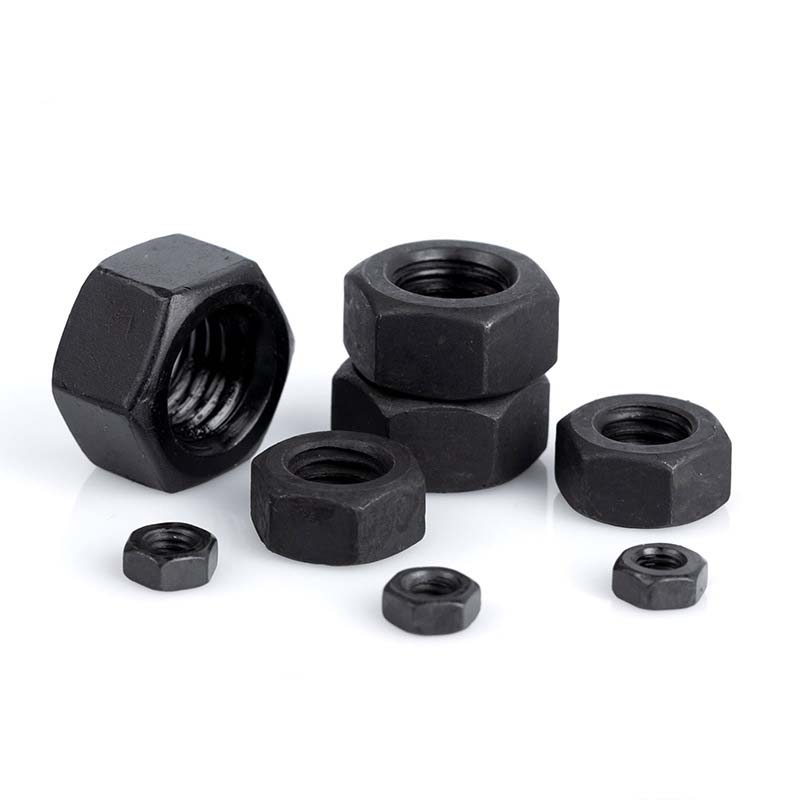Prevailing Torque Type Hexagon Thin Nut
Send Inquiry
Prevailing torque type hexagon thin nuts are usually made from high-quality metals like grade 8/10 carbon steel, stainless steel (A2/A4), or alloy steel.They balance strength, rust resistance, and long-lasting performance.Heat-treated versions get harder and better at handling fatigue, which matters a lot for heavy-duty jobs.The nylon-insert type (if it has one) uses tough plastics that stand up to chemicals and temperature swings.The materials work in all kinds of environments-from outdoor machines to marine equipment.The metal properties are tweaked to handle repeated tightening without losing their locking power.

Installation precautions
To install the prevailing torque type hexagon thin nut correctly, use a properly set torque wrench because of its built-in lock. Too much force can break the friction parts, while not enough might cause the joint to fail. Go slow when tightening, especially with nylon inserts, to avoid overheating. Skip the lubricant unless the manual says otherwise-it could throw off your torque settings. After installing, check with ultrasonic tools or torque audits to make sure it's holding tight. You can reuse it if the locking still works within the specs.

FAQ
Q: What torque specifications should be followed during installation of the prevailing torque type hexagon thin nut?
A: When installing the prevailing torque type hexagon thin nut, you need to factor in its built-in locking resistance. Manufacturers provide torque charts based on size, material, and thread type—for example, an M12 nut might need 50-70 Nm. Too much force can strip threads or break the locking parts, while too little could cause the joint to fail. Use a properly calibrated torque wrench to get the right clamping force. For nylon-insert versions, go slow during installation to prevent melting the plastic insert. Always check the technical specs for exact numbers, since ignoring them might void the warranty or reduce performance.
|
Market |
Total Revenue (%) |
|
North America |
31 |
|
South America |
2 |
|
Eastern Europe |
15 |
|
Southeast Asia |
4 |
|
Africa |
2 |
|
Oceania |
2 |
|
Mid East |
3 |
|
Eastern Asia |
18 |
|
Western Europe |
16 |
|
Central America |
8 |
|
Northern Europe |
1 |
|
South Asia |
6 |
|
Domestic Market |
5 |







